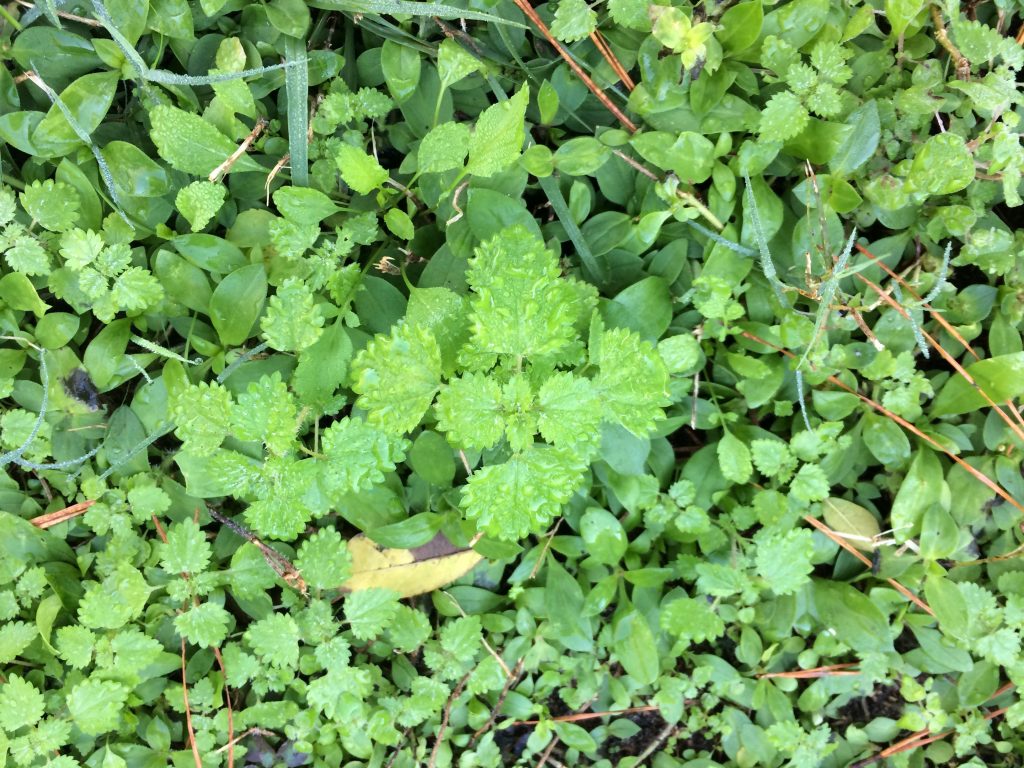
Newsletter and photographs by Green Deane
Making their winter debut are our stinging nettles and they might have the second-worst nettle sting on earth.
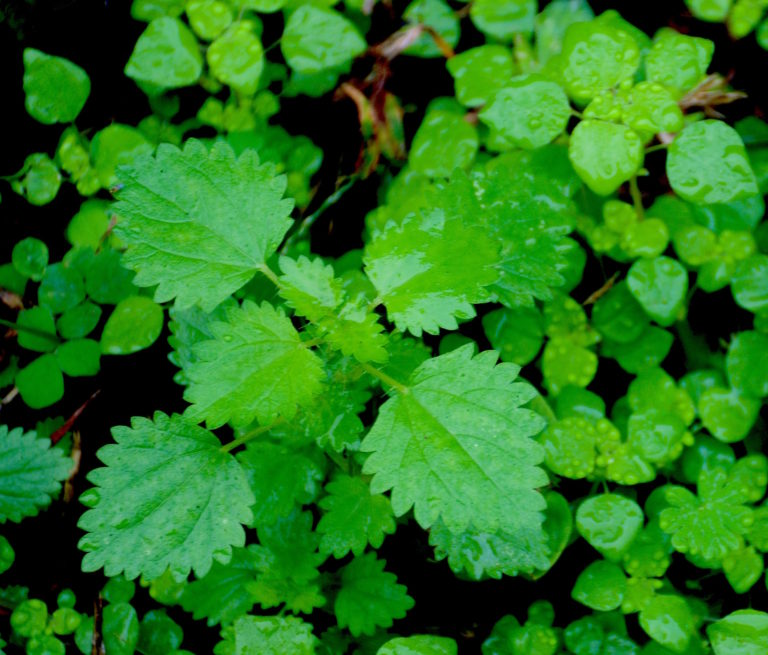
The most powerful stinging nettle is in New Zealand (Urtica ferox) which kills animals and has claimed at least one human life. Our nettle, Urtica chamaedryoides, has a sting like a giant wasp and can burn for days or more. While its common name is a deceptive, “Heartleaf Nettle” its botanical gets to the point, “Stinging Dwarf.” Quite edible but you must handle it with care. If this particular species stings me it is not only extremely painful but a welt develops and the site is sensitive to temperature changes and any liquid for more than a week. The irritant compounds are histamines and acetocholines. Apparently I am quite sensitive to them though I can eat the plant raw or cooked (crushing the needles disarms them.) Also don’t confuse this plant with another stinging plant called the Spurge Nettle, Cnidoscolus stimulosus (video here ). That has an edible root but the leaves are usually not eaten. To learn more about the Heartleaf Nettle go here. For a video, here.
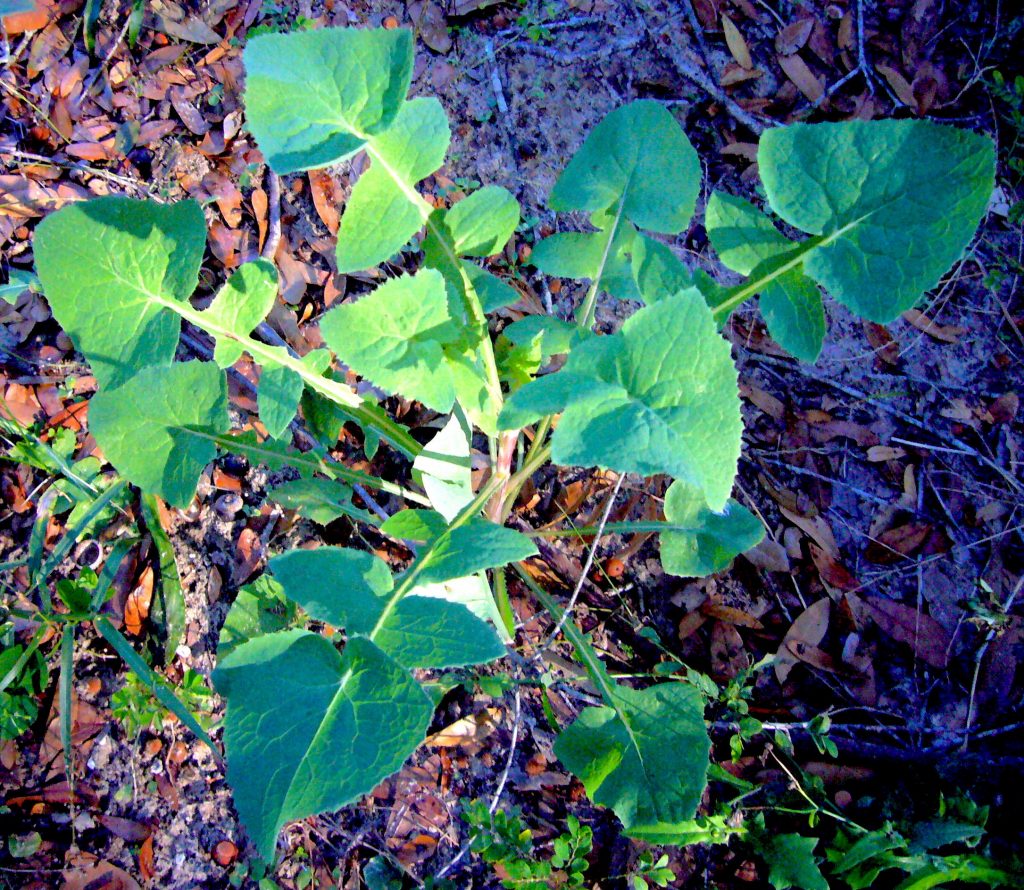
Another not unexpected seasonal green this weekend was the sighting of Sow Thistles in Port Orange. Like its relative the Dandelion it, too, prefers the cooler months locally. Not a true thistle it’s one of the more milder seasonal greens. Although Sow Thistles are commonly called “thistles” they are not in the genus and do not draw blood like true thistles. True thistles are well-armed with needle-sharp spines. While the Sow Thistle can look intimidating it’s mostly just show in that the spines are soft. There are two species locally, the Common Sow Thistle and the Spiny Sow Thistle. The latter is a bit rougher than the former but no where near as abusive as true thistles. Both are slightly bitter raw. A few minutes of boiling takes away the bitterness completely (unlike wild lettuce which always stays slightly bitter.) I have a video on the sow thistles and to read more about them go here.
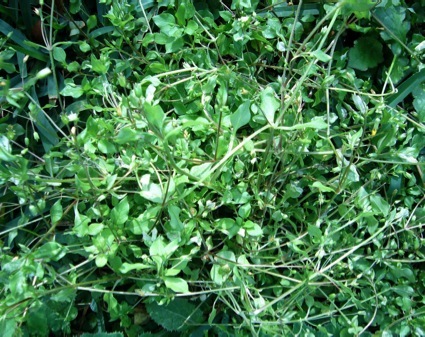
My first sight of adult chickweed this season was while bicycling on the West Orange Bike Trail . Up until this week all examples I found were still small, no more than an inch or so. Among the wild edibles it’s fairly easy to identify with several distinct characteristics. Chickweed has a line of hair on the stem that switches sides at every node (where there are two leaves.) It also has a stretchy inner core and tastes like raw corn. Add the time of year here — our winter — and it’s an easy-to-identify foragable. To read more about chickweed go here. I have a video about it here. (For you locals, it was growing in great profusion between the bike trail and the parallel entrance road of the West Orange Memorial Gardens west of Orlando.)
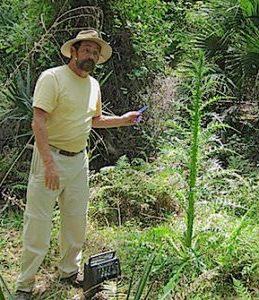
Foraging Classes: Near both coast this weekend with a class Saturday in port Orange (where we should see Goji berries) and a class in Sarasota, always a lot of edibles to find.
Saturday, January 5th, Spruce Creek Park, Port Orange, 9 a.m. to noon. Entrance is on the west side of southbound Ridgewood Ave (which is also US 1) Northbound traffic will have to make a U-turn. For southbound traffic, after passing Nova Road and the twin bridges the park entrance is 1/2 mile south on your right. Meet at the Pavilion.
Sunday, January 6th, Red Bug Slough Preserve, 5200 Beneva Road, Sarasota, FL, 34233. Nine a.m. to noon. Meet at the playground.
Saturday January 12th, Florida State College,south campus, 11901 Beach Blvd., Jacksonville, 32246. We will meet at building “D” next to the administration parking lot. 9 a.m. to noon.
Sunday, January 13th, Blanchard Park, 10501 Jay Blanchard Trail, Orlando, FL 32817. 9 a.m. to noon, meet at the tennis courts next to YMCA building.
Saturday, January 19th, Wickham Park: 2500 Parkway Drive, Melbourne, FL 32935-2335. Meet at the “dog park” inside the park. 9 a.m. to noon
Sunday, January 20th, Dreher Park, 1200 Southern Blvd., West Palm Beach, 33405. 9 a.m. to noon. Meet just north of the science center.
To learn more about the classes go here.
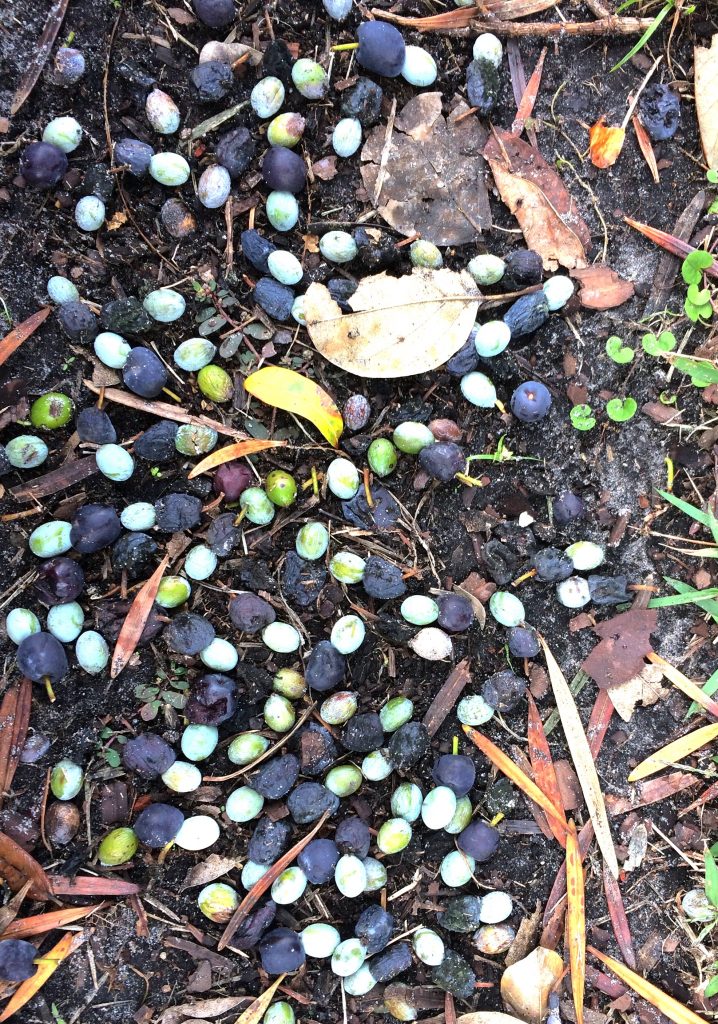
My Podocarpus mystery is still a mystery. It gives me something botanical to ponder. Locally the most common species in the genus is P. macrophyllus. It is the species that forms a ubiquitous hedge. In central Florida those hedges fruit around August, give or take a week or two for seasonal variations and locations further north or south. But, there are two Podocarpus trees in Winter Park that consistently fruit in December. And they are the only two. Other Podocarpus trees on different property nearby do not fruit in December but rather August. The only thing I can think of is that the late-fruiting ones are a different species from a different area than the P. macrophyllus. They are not P. nagi which has a different leaf structure. (The Nagi tree is an attractive tree whose popularity has unfortunately waned over the last century.) For eight years I have seen those two Podocarpus trees fruit in December. It’s a long mystery. I did a video on the P. macrophyllus here.
This time of year two wintertime foragables come up, one quite esteemed the other barely edible. They can at first glance look similar so I’ll mention them together.
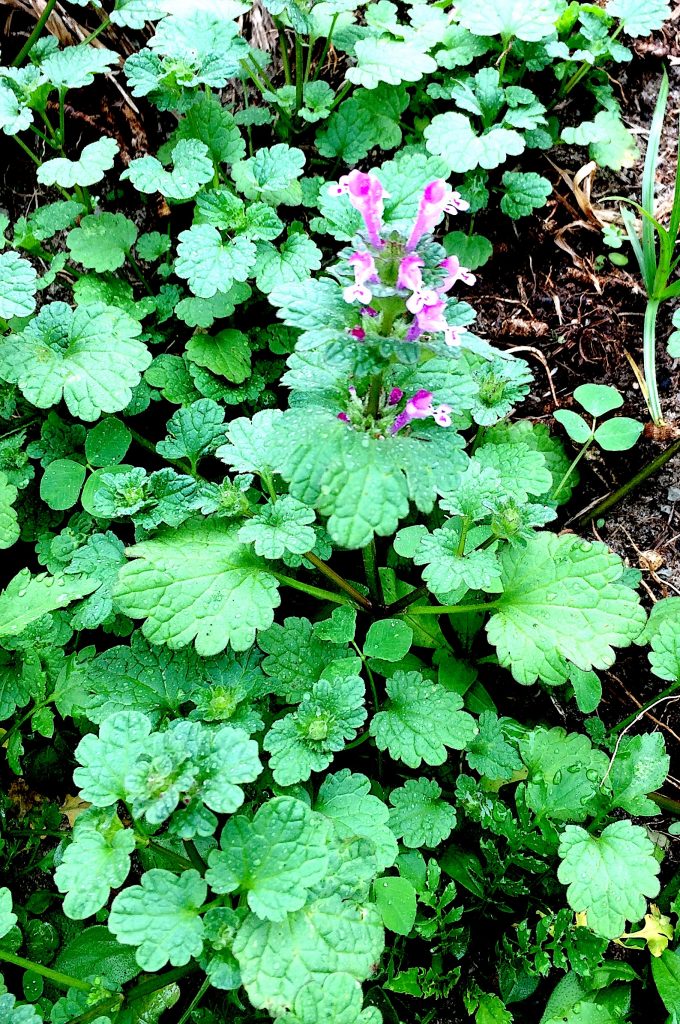
The first is Henbit. It’s in the mint family but does not smell or taste minty. It does, however, have a square stem and the blossoms resembles mints. In northern climates it is one of the first green plants to pop up after the snow goes (it and chickweed.) Locally it likes the cooler months of the year. It was esteemed by the natives because among all the spring greens it is not spicy but rather mild if not on the sweet side. What can be confusing about it is that the leave shape and stem length is different from young to old leaves. But they all have a scalloped shape. It also has a similar looking relative that is also edible called Dead Nettle. I have a video on Hen Bit here and an article here.
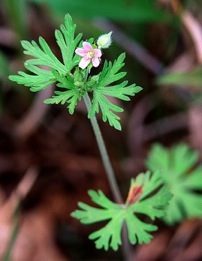
Also found in lawns this time of year are wild geraniums, usually Cranesbill or Stork’s Bill. (Why one is one word and the other two-words possessive I do not know.) Botanically they are Geranium carolinianum and Erodium circutarium. Neither is great foraging. In fact both are more medicinal than edible but they seem to get mention in a variety of foraging books. The problem is they are extremely bitter. You might be able to toss a little bit of both in a salad but that’s about the extent of it. If you have what you think is a Cranesbill or a Stork’s Bill but it has more of a bottle brush blossom than five petals you might have the non-edible Fumaria. It comes up this time of year and from a distance the leaves can remind one of the wild geraniums. To read more about them go here.
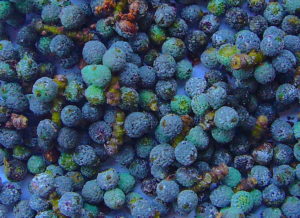
Just because you can do something doesn’t mean you should. Can you make a bayberry candle? Absolutely. Should you? If you have to, yes. If not you might want to reconsider. Southern Wax Myrtle berries are small. They have a little wax on them which is why the species name is cerifera — wax producing. But it takes many gallons and a lot of hot work to get enough bayberry wax to mix with tallow (75/25) to make the famous smokeless candle that keeps away insects. No doubt a hundred years ago it was worth it. Not so much today. But, you can use the dried berries as a spice and the leaves like bay leaves or to make a tea. To read more about the Southern Wax Myrtle go here. I have a video about it here.
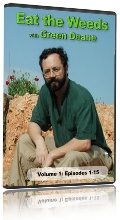
All of Green Deane’s videos available for free on You Tube. They do have ads on them so every time you watch a Green Deane video I get a quarter of one cent. Four views, one cent. Not exactly a large money-maker but it helps pays for this newsletter. If you want to see the videos without ads and some in slightly better quality you can order the DVD set. It is nine DVDs with 15 videos on each for a total of 135 videos. Many people want their own copy of the videos or they have a slow service and its easier to order then to watch them on-line. The DVDs make a good gift for that forager you know especially on long, cold winter months. Individual DVDs can also be ordered or you can pick and choose. You can order them by clicking on the button on the top right hand side of this page (if your window is open wide enough.) Or you can go here.

Want to identify a plant? Looking for a foraging reference? Do you have a UFO, an Unidentified Flowering Object you want identified? On the Green Deane Forum we chat about foraging all year. And it’s not just about warm-weather plants or just North American flora. Many nations around the world share common weeds so there’s a lot to talk about. There’s also more than weeds. The reference section has information for foraging around the world. There are also articles on food preservation, and forgotten skills from making bows to fermenting food. One special section is “From the Frightening Mail Bag” where we learn from people who eat first then ask questions later. You can join the forum by clicking on “forum” in the menu.

Donations to upgrade EatTheWeeds.com have gone well. Thank you to all who have contributed to either via the Go Fund Me link, the PayPal donation link or by writing to Green Deane POB 941793 Maitland FL, 32794. There are many needs left such as expanding the foraging teacher page and the page on monotypic edibles. Several functions were also lost when we transitioned to the new website. I’m still having a hard time finding articles I wrote! There’s always something and such things get more complex and expensive every year. Indeed, the average email cost to send each newsletter is $20.
If you would like to donate to Eat The Weeds please click here. Or you can use my Go Fund Me link, or by writing to Green Deane POB 941793 Maitland FL, 32794
This is weekly issue 336.


I sure love these newsletters!
Hi Deane,
I really love your newsletters and Thank you for all your hard work writing these newsletters and filming the video..
You could also do a Patreon Page to help raise the monthly cost of your newsletter…
How it works.. We your devoted readers chip in $1 and up per month. and you give rewards at different levels of support..
I have a patreon account but have never done anything with it as I really don’t understand it.